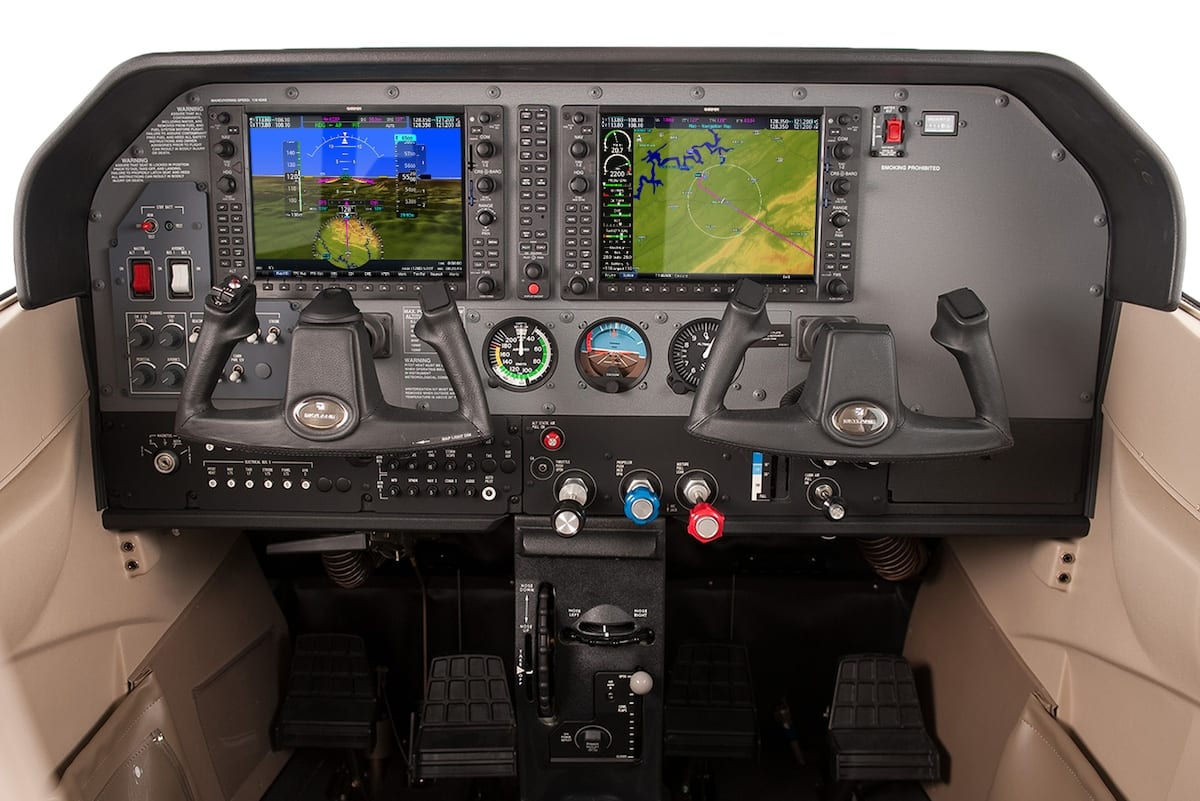Aircraft Cockpit - This article needs additional citations for verification. Please help improve this article by adding links to reliable sources. Unsourced material may be challenged and removed. Find sources: "Glass Cockpit" – News · Newspapers · Books · Scholarly · JSTOR (March 2011) (Learn how and what to remove this message template)
Airbus A380 glass cockpit "will have keyboard and two large computer screens for pilots"
Aircraft Cockpit

A glass cockpit is an aircraft cockpit equipped with electronic (digital) flight instrument displays, typically large liquid crystal screens, rather than traditional analog dials and gauges.
Aircraft Cockpit (flight Deck) Cleaning
While a traditional cockpit uses a series of mechanical sensors (nicknamed "steam gauges") to display data, the glass cockpit uses multiple multi-function displays controlled by flight control systems that can be configured to display flight information when This simplifies aircraft control and navigation , allowing pilots to focus only on the most relevant information. They are also popular with airlines because they usually eliminate the need for flight engineers, saving costs. right
As aerial displays have been modernized, so have the ssors that power them. Traditional gyroscopic flight instruments were replaced by electronic heading and attitude information systems (AHRS) and air data computers (ADCs), which increased reliability and reduced costs and maintenance. GPS receivers are usually installed in glass cabins.
The early glass cockpits of the McDonnell Douglas MD-80, Boeing 737 Classic, ATR 42, ATR 72, and Airbus A300-600 and A310 used electronic flight instrument systems (EFIS) to display position and navigation information only. mechanical sensors stored for airspeed, altitude, vertical speed and engine performance. The Boeing 757 and 767-200/-300 aircraft introduced an Electronic Gyro Indicator and Crew Alerting System (EICAS) to monitor gyro performance while retaining mechanical airspeed, altitude and vertical speed sensors.
Later fitted to the Boeing 737NG, 747-400, 767-400, 777, Airbus A320, later Airbuses, Il-96 and Tupolev Tu-204, glass cockpits completely replaced the mechanical indicators and signal lamps in earlier generations of aircraft. Although glass-cockpit aircraft of the late 20th century retained the analog altimeter, position and airspeed indicators as back-up devices when the EFIS displays failed, more modern aircraft increasingly use digital back-up instruments such as the built-in back-up device. more. system.
What Aircraft Is Shown In This Cockpit Picture?
This article needs additional citations for verification. Please help improve this article by adding links to reliable sources. Unsourced material may be challenged and removed. Find sources: "The Glass Cabin" - News · Newspapers · Books · Scholarly · JSTOR (April 2020) (Learn how and what to remove this template message)
In the late 1960s and early 1970s, glass cockpits appeared on military aircraft; An early example was the F-111D Mark II avionics (first ordered in 1967, delivered 1970–73), which featured a multi-function display.
Until the 1970s, air transport was not so demanding as to require advanced equipment such as electronic flight displays. In addition, computer technology was not at the level where light and powerful electronics were. The increasing complexity of transport aircraft, the advent of digital systems and the growth of air traffic around airports are beginning to change this.

The Boeing 2707 was one of the first commercial aircraft with a glass cockpit. Most of the instruments in the cockpit were still analogue, but CRT displays were to be used for the position indicator and horizontal position indicator (HSI). However, the 2707 was canceled in 1971 due to insurmountable technical difficulties and US government funding of the project.
Why Does The Pilot In Command Sit On The Left Side Of The Cockpit?
By the mid-1970s, the average transport aircraft had over a hundred instruments and controls in the cockpit, and the main instruments were already crowded with pointers, masts and symbols, and more and more cockpit elements competed for cockpit space and pilot control. . .
As a result, NASA researched displays that could transform the aircraft's raw system and flight data into an integrated, easy-to-understand picture of the flight situation, culminating in a series of flights demonstrating the all-glass cockpit system.
The success of the NASA-led glass cockpit is reflected in the full use of electronic flight displays. Flight safety and efficiency are enhanced by a better understanding by pilots of the position of the aircraft relative to the environment (or "situational awareness").
By the late 1990s, liquid crystal displays (LCDs) had become more popular among aircraft manufacturers due to their efficiency, reliability, and legibility. In the past, LCD panels had poor readability at certain viewing angles and poor response times, making them unsuitable for aviation. Modern aircraft such as Boeing 737 Next Generation, 777, 717, 747-400ER, 747-8F 767-400ER, 747-8 and 787, Airbus A320 family (later versions), A330 (later versions), A340-50/600 , A340-300 (later versions), A380 and A350 are equipped with glass cockpits with LCD displays.
What Happens In A Plane's Cockpit
Glass cockpit in the Cirrus SR22. Notice the three analog standby devices at the bottom of the main instrument panel.
Glass cockpits have become standard equipment on airplanes, business jets, and military aircraft. It was installed on NASA's space shuttles Atlantis, Columbia, Discovery and Deavor, as well as on the Russian Soyuz TMA spacecraft, which was first launched in 2002. At the turn of the century, glass cabins began to appear on general aviation planes. . In 2003, Cirrus Design's SR20 and SR22 became the first light aircraft to feature glass cockpits, making them standard on all Cirrus aircraft. By 2005, basic trainers such as the Piper Cherokee and Cessna 172 came with glass cockpits as an option (almost all customers chose them), as did many modern utility aircraft such as the Diamond DA42. The Lockheed Martin F-35 Lightning II features a "panoramic cockpit display" touchscreen that replaces most of the switches and switches found in the aircraft cockpit. So is the civilian Cirrus Vision SF50, which they call a "Perspective Touch" glass cockpit.
Unlike the previous era of glass booths, where designers transferred the appearance of simple electromechanical instruments to electron beam tubes, the new displays represent a real departure. They look and behave much like other computers, with windows and data controlled by point-and-click devices. They also add terrain, approach maps, weather, vertical displays and 3D navigation images.

Advanced concepts allowed aircraft manufacturers to customize cockpits to a greater extent than before. All the manufacturers involved have chosen to do this in one way or another, such as using a trackball, thumbstick, or joystick as a pilot computer-style input device. Many modifications introduced by aircraft manufacturers improve situational awareness and adapt the human-machine interface to improve safety.
A Hawker Siddeley Trident Cockpit Experience
Modern glass cockpits may include Synthetic Vision Systems (SVS) or Enhanced Flight Vision Systems (EFVS). Synthetic vision systems display a realistic 3D image of the outside world (similar to a flight simulator) based on a database of terrain and geophysical features combined with attitude and position information from aircraft navigation systems. Powerful flight vision systems add real-time information from external sources such as an infrared camera.
All new aircraft such as the Airbus A380, Boeing 787 and private jets such as the Bombardier Global Express and Learjet use glass cabins.
Most modern general aviation aircraft are equipped with glass cockpits. Systems like the Garmin G1000 are now available on many new GA aircraft, including the classic Cessna 172. Many small aircraft can also be modified after production to replace analog instruments.
Glass cockpits are also popular as retrofits for older private jets and turboprops such as Dassault Falcons, Raytheon Hawkers, Bombardier Challengers, Cessna Citations, Gulfstreams, King Airs, Learjets, Astras, and more. Aviation service companies work closely with equipment manufacturers to meet the needs of aircraft owners.
Old Russian Airplane Cockpit Interior With Analog Instruments
Today, smartphones and tablets use mini-apps or "apps" to remotely control complex devices over a WiFi radio interface. They demonstrate how the "glass cockpit" concept can be applied to household devices. Applications include toy-grade UAVs to use all aspects of the "glass cockpit" to display instruments from a tablet or smartphone display and touchscreen, and fly-by-wire to control the aircraft.
The idea of a glass cockpit was popularized in the 1980s in trade magazines such as Aviation Week & Space Technology, when NASA announced that it would replace most of the electromechanical pilot instruments on spacecraft with glass cockpits. The articles claimed that the glass cabin components were several hundred pounds lighter than the original pilot instruments and support systems used on the spacecraft. Space Shuttle Atlantis was the first orbiter equipped with a glass cockpit since the launch of STS-101 in 2000. Columbia became the second glass-cabin orbiter on STS-109 in 2002, Discovery in 2005 with STS-114, and Deavor in 2007 with STS-118.
Because aircraft performance depends on the cockpit glass systems, flight crews must be trained in troubleshooting. There have been fifty cases of loss of multiple flight displays on the Airbus A320 family.

On January 25, 2008, United Airlines Flight 731 experienced severe blackout of the cockpit glass, disabling half of the electronic central aircraft monitor (ECAM) displays, as well as all radios, transponders, collision avoidance system (TCAS), and attitude indicators. went
K, 5k, Airplane, Cockpit, Old
The pilots managed to land in Newark
Aircraft cockpit simulator, aircraft cockpit instruments, aircraft cockpit display, aircraft cockpit posters, aircraft cockpit for sale, aircraft cockpit parts, aircraft cockpit landing videos, aircraft cockpit images, model aircraft cockpit instruments, aircraft cockpit video, aircraft cockpit switches, aircraft glass cockpit

